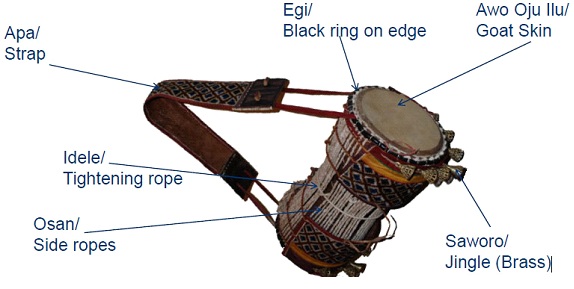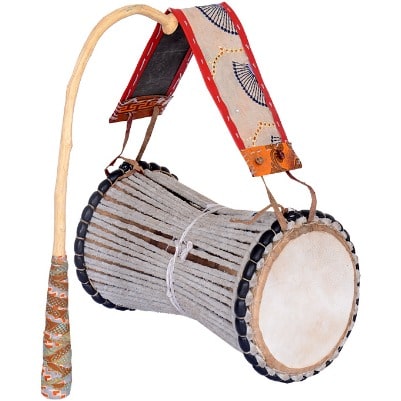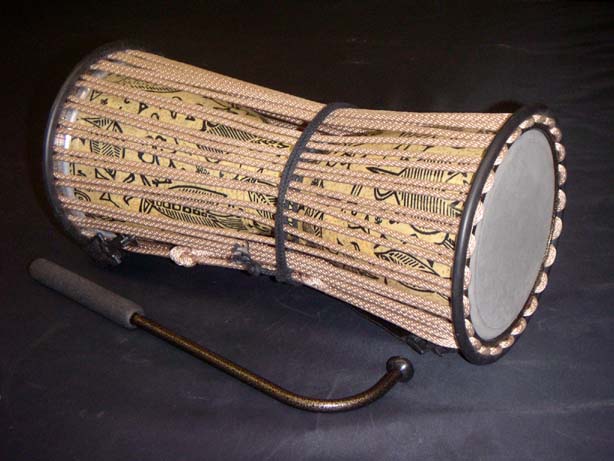The Nigerian Talking Drum
In the Yoruba culture, drumming is a specialized and often inherited activity. Expert drummers were part of the royal entourage and attached to the king’s court. Professional drummers often displayed broad vocabulary, history and literature. Ayangalu is believed to have been the first Yoruba drummer and deified upon his demise. He is believed to be the patron spirit of all drummers who inspires drummers and the art of drumming. The word “Ayan” means drummer in Yoruba language. Certain Yoruba names contain the prefix Ayan, which marks its bearers out as hereditary custodians of the skills and wisdom of Ayangalu.

The Nigerian talking drum is an ancient but evergreen instrument whose pitch can be regulated to mimic the tone and prosody of human speech. It is an hourglass-shaped drum with two drumheads (one on either end), connected by leather tension cords. The drumheads are made from hide, fish-skin or other membranes which are wrapped around a wooden hoop. Leather cords or thongs run the length of the drum’s body and are wrapped around the hoops.

The drum’s distinctive hourglass shape indicates how it is meant to be held, underarm between the dummer’s arm and ribs. The drum is played using a shaped stick as well as the drummer’s fingers. When the waist of the drum is squeezed, the drumhead is tightened, producing a higher note than when it is in a relaxed state. The pitch of the drum can be changed during a single beat, thereby, capturing the pitch, volume and rhythm of the human speech.
Read also: Uli Art
Many African languages are tonal, and the Yoruba language is no exception. The Yoruba language is tri-tonic, consisting of the tonic sol-fa notes, do, re, mi. Different inflexions of these are used to convey different messages. Using low tones for males and higher tones for females, the drummer communicates through the phrases and pauses, which can travel upwards of 4 to 5 miles. This was effective in relaying important information across villages and communities. This way, detailed messages could be sent from one village to the next faster than could be carried by a person riding a horse. The talking drum is additionally used as a song accompaniment and as an aid in telling stories and fables that portray important life-lessons and guidance.

What do you love about the Nigerian talking drum? Let us know, we would love to hear from you.
